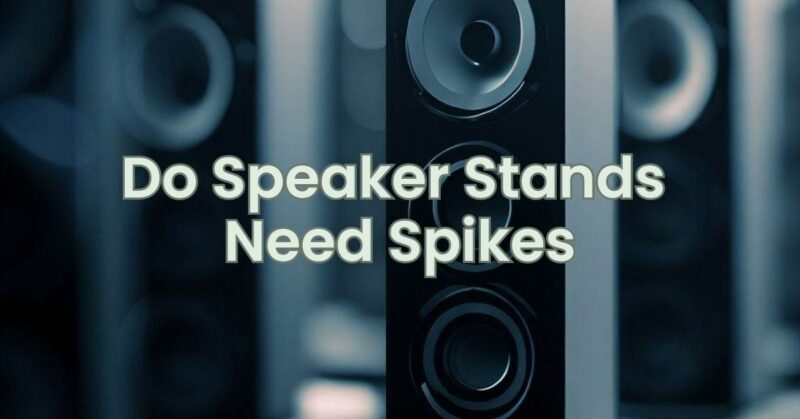When setting up speakers on stands, one question that often arises is whether speaker stands need spikes. Spikes are small metal spikes or cones that attach to the bottom of speaker stands and are designed to penetrate the floor surface. In this article, we will explore the role of spikes in speaker stands, discussing their impact on stability, vibration isolation, and acoustic performance to help you determine whether they are necessary for your speaker setup.
Stability and Speaker Stands
The primary purpose of speaker stands is to provide a stable and elevated platform for speakers. Stability is crucial as it helps prevent unwanted vibrations, resonance, and potential speaker movement that can negatively impact sound quality. Speaker stands without spikes rely on their overall design, weight, and contact surface area to maintain stability.
Benefits of Speaker Stand Spikes
- Improved Stability: Speaker stand spikes can enhance stability by providing a more secure and grounded connection between the stand and the floor. The spikes penetrate the surface and reduce the potential for movement or tipping, especially when the stands are subjected to vibrations caused by audio playback or room activity.
- Vibration Isolation: Spikes can help isolate the speaker stands from the floor, reducing the transmission of vibrations and resonances between the speaker and the supporting surface. This can lead to cleaner sound reproduction, minimizing unwanted interference and enhancing overall audio clarity.
- Floor Coupling: By penetrating the floor, spikes create a more intimate coupling between the speaker stands and the floor. This coupling can result in improved bass response and tighter low-frequency performance, as the energy generated by the speaker is efficiently transferred to the floor.
Acoustic Considerations
While spikes can offer benefits in terms of stability and vibration isolation, their impact on sound quality can vary depending on the specific setup and room characteristics. Consider the following factors:
- Floor Type: The effectiveness of spikes depends on the type of floor surface. Solid or hardwood floors generally provide a more stable base and better results with spikes. On the other hand, carpeted floors may require additional measures such as spike disks or alternative solutions to achieve similar stability.
- Room Characteristics: The acoustic properties of the room, including its size, shape, and construction materials, can influence the effectiveness of speaker stand spikes. In some cases, spikes may help mitigate resonances caused by the interaction of the speaker and the room, resulting in improved sound quality. However, in certain room configurations, the spikes may not have a significant impact on the overall acoustic performance.
Personal Preference and Experimentation
The decision to use spikes on speaker stands ultimately comes down to personal preference and experimentation. It is advisable to consider factors such as floor type, speaker weight, room acoustics, and the specific goals of your audio setup. Some individuals may find that spikes improve stability and sound quality, while others may not notice a significant difference or may prefer alternative solutions such as rubber or foam pads to decouple the stands from the floor.
Conclusion
While spikes on speaker stands can offer benefits in terms of stability, vibration isolation, and floor coupling, their necessity depends on various factors, including floor type, room characteristics, and personal preference. If you have a solid or hardwood floor and desire improved stability and potential acoustic enhancements, speaker stand spikes may be worth considering. However, it is important to experiment and evaluate their impact in your specific setup to determine the optimal solution for achieving stable, well-isolated, and pleasing sound reproduction.


